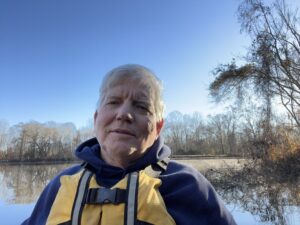
Morning paddle the day before the disaster.
I had a nearly fatal accident last week. In the end, I just got soaked from a capsize of my kayak and lost some items. I thank God I am alive. After reading my story, some very well-meaning people may say, “God protected you!” Being a very devout man and former healthcare chaplain…that is the LAST thing I’d want to hear.
Setting the stage for disaster
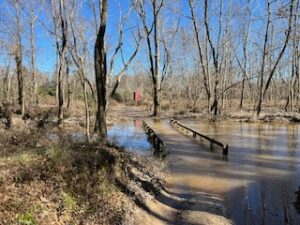
Access to take-out through high water
I took advantage of a break in my schedule, and several good weather days ahead, to go camping, kayaking, and biking. I was off to a new place for me, Bogue Chitto State Park in Louisiana, not far from the Gulf Coast. The park stretches out over several miles of the Bogue Chitto River.
The river was at flood stage, and moving very fast. I scouted it out for two days and estimated that it would take me an hour to paddle from the put-in to the take-out. The only unknown was what exactly the take-out would look like.
I took two trips there to assess it, by car and by bike. I could see the river, but I couldn’t see the riverbank where I had to take out because of the high water. So, I dropped a pin on the map on my phone so I’d know when to look for it and set off to start the paddle.
Disaster strikes
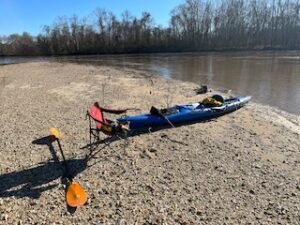
Pleasant, sunny break on sandbar on Bogue Chitto River, LA
It was a sunny but cool day. I had no problem navigating the high, swift water, and even took a pleasant break on a sandbar.
As I approached the take-out and got closer to the bank, the strong current slammed me sideways into a downed tree and I flipped over and went totally under. I was in my sit-on-top kayak so there was no popping back upright. There was also no righting the kayak because I have no idea how to do an Eskimo roll. Once I came above water again, I found my boat and paddle.
The next task was to get out of the fast-moving water. Swimming with considerable effort, I found a fallen tree near the bank and was able to hold onto it. I spent several

At this place on the bank I made my self-rescue.
minutes, still in the water, just catching my breath. Was it two minutes or five minutes? Those few minutes also gave me time to think, “This is not a good situation.” When I left, I had told no one I was paddling and when to expect me back.
Again, with much effort, I swam in water that was mostly over my head, pulling my boat from tree to tree until I found solid ground. I knew I was close to the take-out, so I walked through the woods dragging my boat until I got to the road and eventually to the take-out. I had left my bike there earlier, and was able to ride the several miles back to my car.
Some things went right…
Fortunately, I did a lot of things right. I had on my life jacket, cinched up tight. It literally saved my life. I have always worn a fanny pack attached to my body for things I did not want to lose. In it was my car key.
I also had secured my phone in my life jacket. I had it out moments before to check for the take-out and set it on the floor of the kayak. Then I thought, “Maybe I ought to secure this puppy.” I am so glad I did.
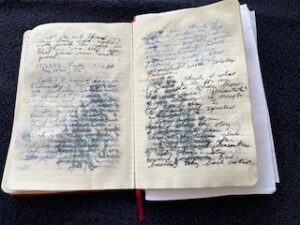
Journal was baptized after the capsize.
Because of the cool temperature, I wore wet suit pants and socks. My t-shirt and turtleneck were synthetic material, which retains some warmth even when wet. I never felt cold, partly because I was working so hard.
My biggest regret, besides getting too close to that fallen tree, was I did not secure my cochlear implant processor. I lost it in the tumble. Fortunately, I had my old processor in the car as a backup. I lost my hat and a bottle of water, too.
I never had a fear that I would die. I could have, but my life jacket saved me. There was a moment when I got separated from my boat that I feared I would not be able to get back to it and be dragged down river to who knows where. Thankfully, I was able to use my paddle to pull the boat back toward me.
It’s “No problem”
Sitting at camp that night, I was glad to be alive and warm by the fire before me. I reviewed the events of the day. I thought about my friend, Wayne, who once reframed life’s challenges for me simply using the phrase, “No problem.”
 For a situation in which you have no control: “No problem, there is nothing you can do about it.” For a situation in which you CAN do something about it: “No problem, take steps to figure it out.”
For a situation in which you have no control: “No problem, there is nothing you can do about it.” For a situation in which you CAN do something about it: “No problem, take steps to figure it out.”
For me, this mishap was the latter, and I got through it with a series of “no problems.” Submerged in the water? No problem, get above water. Lost my boat? No problem, pull it back with my paddle. Need to avoid being swept downstream? No problem, swim to shore, relax, catch my breath. Got to get back to the car? No problem, get into the woods and find the road.
That’s not what I was thinking during the unfolding disaster, everything happened so fast I had no time to think of anything but the task at hand. But you know what they say about hindsight.
A real miracle
In my 45 years of paddling, I have never swamped. I always prepare for the possibility, thus the attached and secure fanny pack, the life jacket, and wet suit. But I also always thought it was a remote possibility, thus I did not secure my cochlear device. The next morning, I typed a long journal entry on my computer (my journal got soaked in the spill). Here is an excerpt:
“I have thought about what a disaster yesterday could have been. Had I been swept underwater and pinned in a sieve of the branches of the tree, I would have been dead in minutes. They might not have found my body for weeks as the flood waters receded. A similar accident took the life of a very skilled kayaker in Great Falls, Virginia in 2013. She got pinned under water and drowned.
“So many random, chance happenings prevented the capsize from becoming a disaster. When I first started paddling years ago I asked canoe guide, Ralph Shaw, why flood waters on whitewater rivers are so dangerous. After all, when the water rises all the rapids disappear. He said it is the volume of water that is the danger. That is what toppled me yesterday. Once the massive flood caught the edge of my boat, I was at the mercy of those waters….
“…I can hear some well-meaning people saying to me, ‘God protected you.’ I don’t want to hear that. The reason being is the terrible implication for all those who do drown in similar situations. Or what about hundreds of my patients who died while I was a nursing home and hospice chaplain? Following this reasoning, God did not protect them. It is a view that God picks winners and losers.
“I CAN say, ‘I thank God I am alive.’ But not that God saved me last week. I think of Cheryl Strayed, whom I wrote about in my blog, when she just said, ‘Thank you,’ at the end of her 1,000+ mile hike on the Pacific Crest Trail. I am simply glad to be alive every day.”
The miracle is not that I did not die last week — the real miracle it is that I am alive in the first place.
________________________________________
Chaplain Hank Dunn is the author of Hard Choices for Loving People: CPR, Feeding Tubes, Palliative Care, Comfort Measures and the Patient with a Serious Illness and Light in the Shadows. Together they have sold over 4 million copies. You can purchase his books at hankdunn.com or on Amazon.

 Update our advance directives. I wrote a blog recently about
Update our advance directives. I wrote a blog recently about 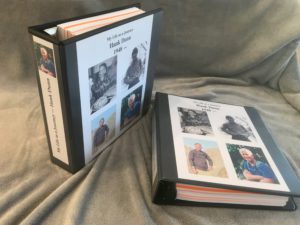 Continue to gather my “memoir” for my kids and grands. I wrote a
Continue to gather my “memoir” for my kids and grands. I wrote a  I posted a
I posted a 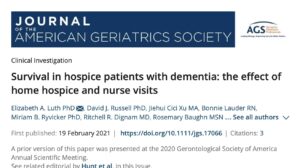 It makes no sense that hospice would want to hasten a patient’s death. The more days the patient is on hospice, the more reimbursement the hospice receives. It is totally against their financial interest to hasten death.
It makes no sense that hospice would want to hasten a patient’s death. The more days the patient is on hospice, the more reimbursement the hospice receives. It is totally against their financial interest to hasten death.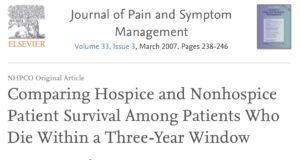 Many studies confirm that hospice patients live longer than nonhospice patients suffering from the same disease.
Many studies confirm that hospice patients live longer than nonhospice patients suffering from the same disease.  Rosemary Bowen, at 94, was living independently. She said she had had a wonderful life and did not look forward to a long, slow decline toward death. For years, she had been telling her children, “That her life would not be worth living if she had to depend on caretakers to feed her, dress her, and take her to the toilet.” Then, it happened. She fractured her back and went to rehab but was unable to live independently. That was enough for her.
Rosemary Bowen, at 94, was living independently. She said she had had a wonderful life and did not look forward to a long, slow decline toward death. For years, she had been telling her children, “That her life would not be worth living if she had to depend on caretakers to feed her, dress her, and take her to the toilet.” Then, it happened. She fractured her back and went to rehab but was unable to live independently. That was enough for her. Do not try this without medical support. Rosemary was able to get a hospice to care for her in her last days. Palliative care is also available to ease burdensome symptoms like pain and thirst. See
Do not try this without medical support. Rosemary was able to get a hospice to care for her in her last days. Palliative care is also available to ease burdensome symptoms like pain and thirst. See 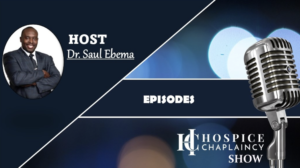
 “There is a difference between a happy life and in living a meaningful life.… Living a meaningful life has to do with being a giver.… If you want to find meaning in your life you have to begin reaching out.… Happiness and unhappiness does not predict suicide but living a life without meaning does.”
“There is a difference between a happy life and in living a meaningful life.… Living a meaningful life has to do with being a giver.… If you want to find meaning in your life you have to begin reaching out.… Happiness and unhappiness does not predict suicide but living a life without meaning does.”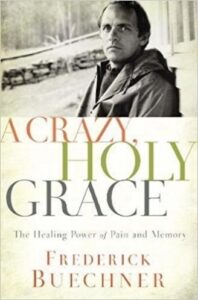 “Believing in him is not the same as believing things about him such as that he was born of a virgin and raised Lazarus from the dead. Instead, it is a matter of giving our hearts to him, of come hell or high water putting our money on him, the way a child believes in a mother or a father, the way a mother or a father believes in a child.”
“Believing in him is not the same as believing things about him such as that he was born of a virgin and raised Lazarus from the dead. Instead, it is a matter of giving our hearts to him, of come hell or high water putting our money on him, the way a child believes in a mother or a father, the way a mother or a father believes in a child.” I was leaving on one of my daily bike rides recently and needed to pick a new book to listen to. I selected a reread —
I was leaving on one of my daily bike rides recently and needed to pick a new book to listen to. I selected a reread —  “No one ever told me that grief felt so much like fear. I am not afraid, but the sensation is like being afraid.”
“No one ever told me that grief felt so much like fear. I am not afraid, but the sensation is like being afraid.” “It is incredible how much happiness, even how much gaiety, we sometimes had together after all hope was gone.”
“It is incredible how much happiness, even how much gaiety, we sometimes had together after all hope was gone.” 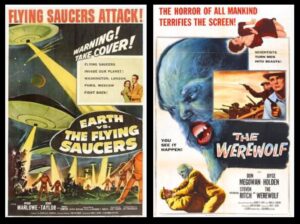 I was such a scaredy-cat at 8 years old. All I can remember of two particular movies in 1956 was that I kept my eyes closed during the entirety of each film. I have just discovered, through Wikipedia, that
I was such a scaredy-cat at 8 years old. All I can remember of two particular movies in 1956 was that I kept my eyes closed during the entirety of each film. I have just discovered, through Wikipedia, that 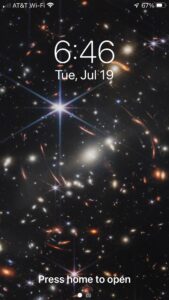 I just placed the latest “deep field” photo from the new James Webb Space Telescope to my home screen on my iPhone. This is a time exposure photo of a portion of the night sky the size of a grain of sand held at arms-length. Thousands of galaxies appear as we look back billions of years. Each galaxy has billions of stars — each star is not unlike our sun.
I just placed the latest “deep field” photo from the new James Webb Space Telescope to my home screen on my iPhone. This is a time exposure photo of a portion of the night sky the size of a grain of sand held at arms-length. Thousands of galaxies appear as we look back billions of years. Each galaxy has billions of stars — each star is not unlike our sun.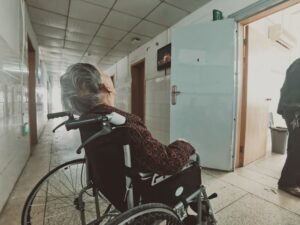 The patient had left verbal and written instructions that she did not want to have life-saving treatments when she was dying. A “No CPR” order was on her chart. Knowing her daughter’s feelings, the old lady chose her son as her power of attorney. She conspicuously omitted any mention of her daughter in the document.
The patient had left verbal and written instructions that she did not want to have life-saving treatments when she was dying. A “No CPR” order was on her chart. Knowing her daughter’s feelings, the old lady chose her son as her power of attorney. She conspicuously omitted any mention of her daughter in the document. How many times have we seen in an obituary, “He died peacefully at home with his family gathered around him.” Families wear this as a badge of honor. They provided the best of care and met the patient’s wishes to remain at home.
How many times have we seen in an obituary, “He died peacefully at home with his family gathered around him.” Families wear this as a badge of honor. They provided the best of care and met the patient’s wishes to remain at home.